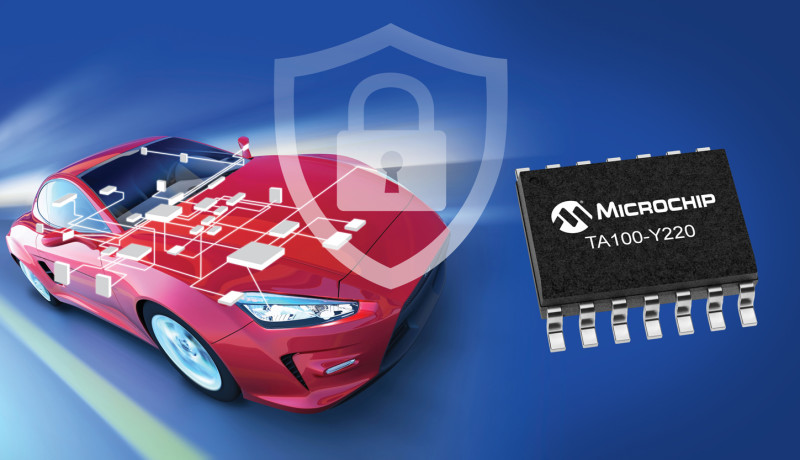First Cryptographic Companion Device Brings Pre-programmed Security to the Automotive Market

This is a submission from Microchip on its CryptoAutomotive™ security IC, the TrustAnchor100. The cryptographic companion device supports in-vehicle network security solutions such as secure boot, firmware update and message authentication, including Controller Area Network (CAN) MAC at bus speed.
Due to the rise of in-vehicle network connections like Bluetooth® and LTE/5G, today's vehicles host more vulnerabilities than ever before, driving new cybersecurity regulations and specifications for the automotive market. Helping OEMs and their module suppliers simplify the upgrade of existing designs to meet security requirements for future generations, Microchip Technology Inc. today announced its CryptoAutomotive™ security IC, the TrustAnchor100 (TA100). The cryptographic companion device supports in-vehicle network security solutions such as secure boot, firmware update and message authentication, including Controller Area Network (CAN) MAC at bus speed.
The TA100 provides an alternative in-vehicle network architecture implementation for secure boot and message authentication — and has already been approved by multiple OEMs around the world as a solution for EVITA Medium and EVITA Full HSM requirements. Its feature set was designed based on careful review of several prominent OEM cybersecurity specifications to help facilitate a Tier 1’s pursuit of OEM Part Production Approval (PPAP). Additionally, Microchip offers security specification and Request for Quote (RFQ) review services to assist Tier 1s in developing educated responses, improving their project award success rate.
The TA100 removes the challenges associated with secure code development and provisioning by offering pre-programmed cryptographic internal application code provisioned with unique asymmetric key-pairs and associated x.509 certificates — reducing risk, cost and time to market.
Security
In order to comply with the new security specifications, automotive designers must rearchitect the vehicle’s electronic control units (ECUs) with secure hardware. Existing solutions in the market include single chip dual core hardware security module (HSM) devices, which require OEMs and their module suppliers to rearchitect their application software to integrate security. In addition to the effort required for this integration, the risk of security holes introduced in disparate implementations pose significant barriers through this path. Third party security software can help overcome this barrier in part with increasing development costs.The TA100 provides an alternative in-vehicle network architecture implementation for secure boot and message authentication — and has already been approved by multiple OEMs around the world as a solution for EVITA Medium and EVITA Full HSM requirements. Its feature set was designed based on careful review of several prominent OEM cybersecurity specifications to help facilitate a Tier 1’s pursuit of OEM Part Production Approval (PPAP). Additionally, Microchip offers security specification and Request for Quote (RFQ) review services to assist Tier 1s in developing educated responses, improving their project award success rate.
The TA100 removes the challenges associated with secure code development and provisioning by offering pre-programmed cryptographic internal application code provisioned with unique asymmetric key-pairs and associated x.509 certificates — reducing risk, cost and time to market.
